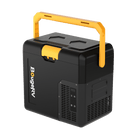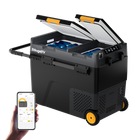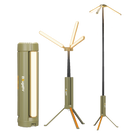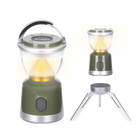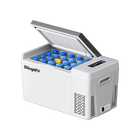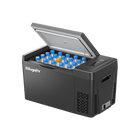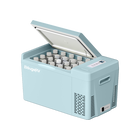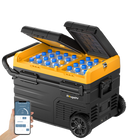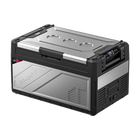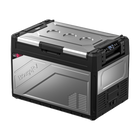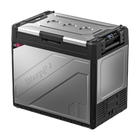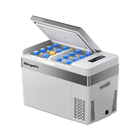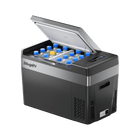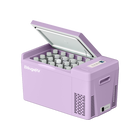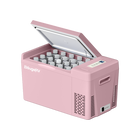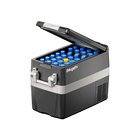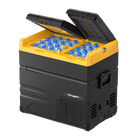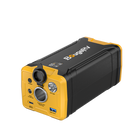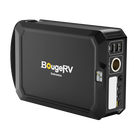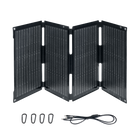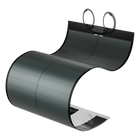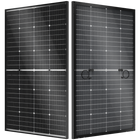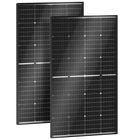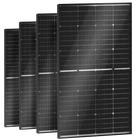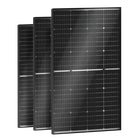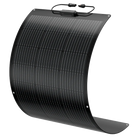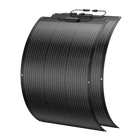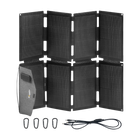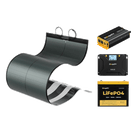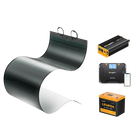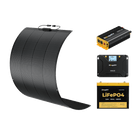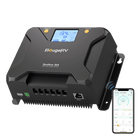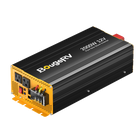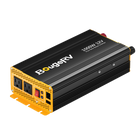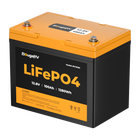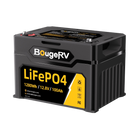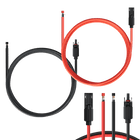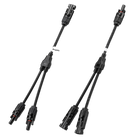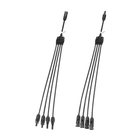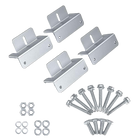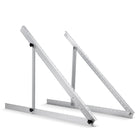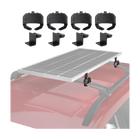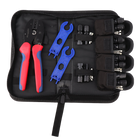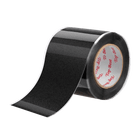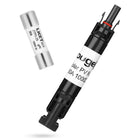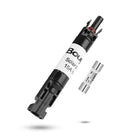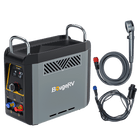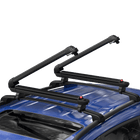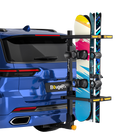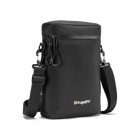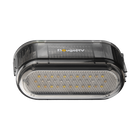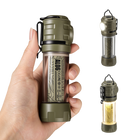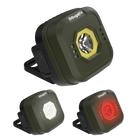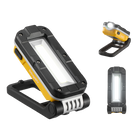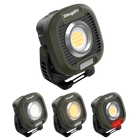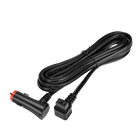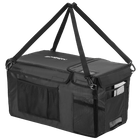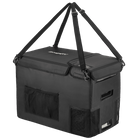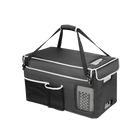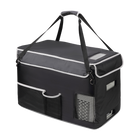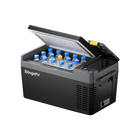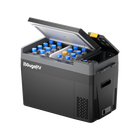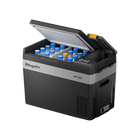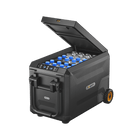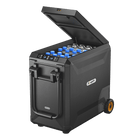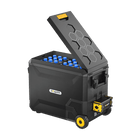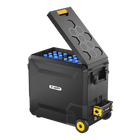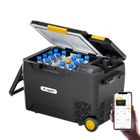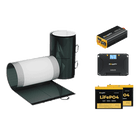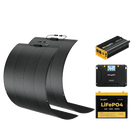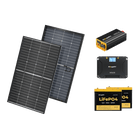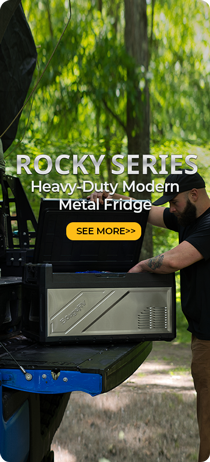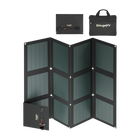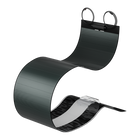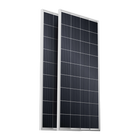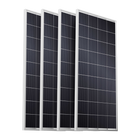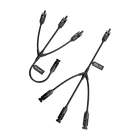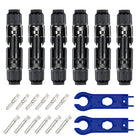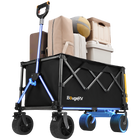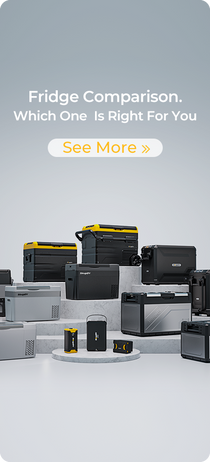What Size Fridge for Overlanding?

A camping fridge can significantly enhance your comfort and convenience, particularly if you aim to keep your food fresh and cold for extended periods.
If you're considering investing in a camping fridge for overlanding, you might be pondering the appropriate size for your adventure.
In this blog post, you will discover the answer and gain tips on how to select the best one for your needs. You'll also learn about the top-performing fridge for overlanding this year, and more!
Let's dive into the blog!
Overlanding and Camping Fridge
Overlanding involves exploring remote and often rugged terrain with a vehicle. It's not just about driving from point A to point B, but rather about experiencing both the journey and the destination. Overlanding can take you to places that are off the beaten path, where you can immerse yourself in nature, culture, and adventure.
One of the challenges of overlanding is keeping your food and drinks fresh and cold, especially in hot climates or during long trips. You don't want to rely on ice or coolers that can melt, leak, or spoil your food. Additionally, you don't want to waste time and money searching for grocery stores or restaurants along the way.
That's why many overlanders opt for a camping fridge, also known as an overland fridge, a 12V fridge, or a portable fridge. It’s a device that uses electricity or gas to cool items. Designed to be durable, efficient, and easy to use in outdoor settings, a camping fridge differs from a regular fridge in that it can withstand vibrations, bumps, and temperature fluctuations. It can also run on low-power sources, such as a car battery, solar panels, or a generator.
What Size Fridge for Overlanding?

When selecting an Overlanding fridge, consider your trip duration, group size, types of food you plan to bring, vehicle space, power supply, preferences, and budget.
As a general rule of thumb, for weekend trips or solo travelers, a 20-30 quart fridge is sufficient. A medium-sized group on a week-long journey might opt for a 40-60 quart fridge. Extended trips or larger groups should look at fridges over 60 quarts.
However, this is just an estimate, and you may need more or less space depending on your actual needs.
When choosing the fridge size, also ensure that the fridge fits in your car and can run efficiently on your power setup. Larger fridges offer more space but consume more power and cost more. It's wise to slightly overestimate your needs to avoid running out of space.
Fridge Size Recommendation Chart
Check out the following table to quickly decide the fridge size based on different scenarios:
|
Trip Duration |
Number of Travelers |
Storage Needs |
Energy Efficiency |
Recommended Fridge Size |
|
Short Trips (2-3 days) |
Solo Traveler |
Basic Supplies |
Low Power Consumption |
20-30 Qt |
|
Medium Trips (1 week) |
Small Group (2-4) |
Full Meals and Beverages |
Low to Medium Power Consumption |
40-60 Qt |
|
Extended Trips (2+ weeks) |
Large Group (5+) |
Special Dietary Requirements |
Medium to High Power Consumption |
60+ Qt |
To determine the best size for overlanding, adjust it according to your specific situation and needs.
What Is the Best Size Fridge for Overlanding?
The best size fridge for overlanding is somewhere between 40 and 60 quarts. This size range offers ample space to store food and drinks for a couple or a small family for a week or more, without taking up too much space or adding excessive weight to your vehicle. It also provides enough flexibility to accommodate different types of food and beverages, such as fresh, frozen, or canned items.
However, there isn’t a one-size-fits-all solution; you might find that a smaller or larger fridge works better for your needs
Do I Need a Camping Fridge?

You might be wondering if you need a camping fridge for overlanding. After all, you could always use a cooler or an icebox, right? Well, not exactly. While coolers and iceboxes are cheaper and easier to find at any grocery store, gas station, or outdoor shop, they also have some significant drawbacks.
For one thing, coolers rely on ice to keep your food cold, which means you'll have to constantly buy or refill ice as it melts. This can be inconvenient, expensive, and wasteful, especially if you're traveling in remote areas where ice is scarce or unavailable.
Moreover, coolers and iceboxes can become messy and soggy as the ice melts, potentially ruining your food and making it unsafe to eat.
A camping fridge, on the other hand, uses electricity or propane to maintain cold temperatures without relying on ice. This means no more worries about buying or refilling ice, enabling you to keep your food dry and fresh for longer periods.
Additionally, a camping fridge for Overlanding offers more consistent temperature control to prevent your food from spoiling or freezing. And unlike coolers and iceboxes, a camping fridge can also freeze your food if you need to store it for extended periods.
Read more:
Are Electric Coolers Worth It?
Cooler VS Portable Refrigerator: Which is better?
Can I Use a Normal Fridge for Camping?
Alongside regular coolers and iceboxes, you might consider using a standard household refrigerator for camping, especially if you have one at home or can find an affordable option. However, this is not recommended for several reasons.
First of all, normal fridges are not designed for camping conditions. They are not built to withstand vibrations, bumps, dust, moisture, or extreme temperatures that you might encounter on the road. Normal fridges are also not insulated enough to keep your food cold without using too much power.
Second of all, normal fridges are not compatible with camping power sources. Normal fridges are run on AC power (alternating current), which is what you get from a wall outlet. However, camping power sources usually provide DC power (direct current), which is what you get from a battery or a solar panel.
To use a normal fridge with DC power, you would need an inverter that converts DC power to AC power. However, inverters are expensive, bulky, noisy, and inefficient, and they can cause damage to your fridge or your power source.
What Is the Best Type of Fridge for Camping?
Here are some of the most common types of camping fridges and their pros and cons:
Compressor Fridge
Compressor fridges are energy-efficient, offer rapid and consistent cooling, and precise temperature control. They’re ideal for longer camping trips.
Absorption Fridges
Run on gas, making them suitable for off-grid camping. However, Absorption fridges tend to be less efficient than compressor fridges.
Thermoelectric Coolers
Thermoelectric coolers are suitable for short trips but may struggle in extremely hot conditions. They’re limited in terms of cooling capacity.
The Best Overland Fridge Freezers 2024
If you're in the market for the best overland fridge freezers in 2024, consider exploring some of these models:
BougeRV Rocky Series Overlanding Fridge
The BougeRV Rocky Series fridge is a top pick for Overlanding. Built tough with a stainless steel shell and reinforced corners, the Rocky can handle any off-road terrain without breaking down.
It’s like having a portable kitchen! Its dual-zone control, removable dividers, and nested basket keep everything chilled and organized. After a long, hot drive, you’ll love grabbing an ice-cold drink and cooking up a tasty meal.
It cools efficiently using just 60W and works with batteries, wall outlets, car batteries, or solar setups. So, you can enjoy the journey without any hassle!

12V Colorful Mini Fridges
It’s a premium choice for overlanding, boasting an array of stunning colors. Featuring a rapid-cooling design, it can chill your food in just 16 minutes. With a capacity of 23 quarts (22 liters), it's sufficiently sized to store food and drinks for a short trip. This versatile fridge can operate on solar power, AC power, or car battery power. In ECO mode, it consumes a mere 450Wh per day. Keep your food and drinks fresh and cool with this compact fridge! Priced at $269.99, it offers both efficiency and style for your adventure.

ASPEN 40 PRO 12V 43QT Dual-System IceDrive™ Fridge with Wheels
Another top-tier option to consider! This fridge boasts a generous capacity of 43 quarts (41 liters). Equipped with a dual-zone system and the innovative Ice Drive System, the ASPEN fridge not only keeps your food fresh but can also keep ice cream perfectly frozen. It's capable of cooling down to 0°F in just 30 minutes. Thanks to its wheels, this ASPEN fridge is exceptionally portable. It is priced at approximately $509.99.

BougeRV 59QT 12V Dual Zone Car Refrigerator
This car fridge features a dual-zone design that allows you to store drinks and food separately, each at its optimal temperature. It's equipped with an APP control system, so you can set the temperature, modes, and more directly from your phone. Additionally, this dual-zone fridge comes with wheels for effortless portability.
If you enjoy overlanding with your family or friends for extended periods, this 59-quart (55-liter) camping fridge is a must-have. It is priced at $559.99.
If you're looking for more budget-friendly camping fridges suitable for overlanding and available in various sizes, consider checking out BougeRV's 12V fridges. They are portable and can cool your goods quickly. Whether you prefer a solo trip lasting several days or travel for weeks, you can always find a perfectly sized fridge at BougeRV.
Final Thoughts
So far, we've discussed the best camping fridges for camping, the ideal fridge size for overlanding, and some of the top models available on the market in 2024. We hope that this blog has helped you make an informed decision about which size fridge is most suitable for your overlanding needs.
Start planning for your next overlanding adventure now!
FAQs
What’s the Difference Between an RV Refrigerator and a Regular Refrigerator?
RV refrigerators are more portable, offering versatility with multi-power options (AC/DC/propane) and resistance to movement. They're compact and energy-efficient, fitting the nomadic RV lifestyle. Choosin an RV fridge ensures efficiency and durability on the road.
Conversely, regular refrigerators are larger, stationary units designed solely for residential use with an AC power supply. Regular Refrigerators are not suited for travel due to their size, energy demands, and lack of portability.
How to Power an Overland Fridge?
When powering your overland fridge, you need to make sure that your fridge has enough power to run continuously without draining your vehicle's battery or causing any damage.
There are several ways to power an overland fridge, such as
-
Using a second battery: This is a safer and more reliable way to power your fridge. You can either use an auxiliary battery that is installed in your vehicle's engine compartment or trunk, or use a portable battery or portable power station that you can carry with you.
-
Using solar panels: Solar panels can harness the energy from the sun and convert it into electricity that can charge your battery and run your fridge. This way, you don't need to rely on your vehicle's engine or fuel, and you can enjoy free and unlimited power as long as there is sunlight.
-
Vehicle battery: This is the simplest and most convenient way to power your fridge. You just need to connect your fridge to your vehicle's 12V outlet or hardwire it to the battery.







